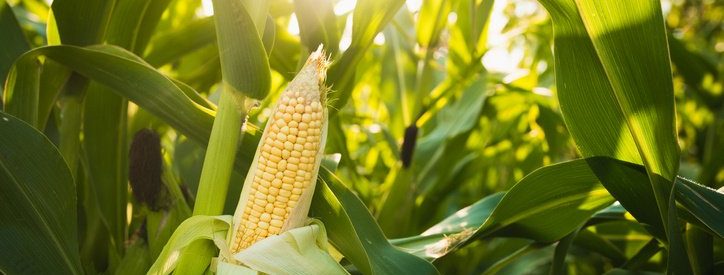Make Sure Your Farm is Protecting Its Most Valuable Assets
Crop insurance is a crucial safety net for any farmer. Does your farm have the right protection to cover your losses in the event that something with your crops goes wrong?
Just like any business, your farm needs certain insurance policies to protect your finances and livelihood, but farms have several policies created specifically for their equipment, their products, and more. Crop insurance is a key example.
At a high level, crop insurance covers the loss or damage to crops due to a natural disaster or significant drop in the price of agricultural products. Your crops are how you make your living, and crop insurance policies ensure that if something goes wrong, you don’t lose everything.
If you’re wondering how much crop insurance can cost, it depends on your individual situation, but the good news is that most crop insurance is a federally subsidized insurance plan. That means that the majority of farmers don’t have to worry about stretching their finances to afford crop insurance policies because the government helps to pay for it. For some farmers, the government picks up about half of the monthly premium, which makes the benefit of having an insurance policy for your crops a great deal easier to obtain.
There are a few different policies that farmers can use to cover their crops depending on the risks that they face for the area they’re in. We’ll get into the most popular, multiple peril crop insurance (MPCI) first.
How Multiple Peril Crop Insurance Protects Your Farm
MPCI is the insurance you need to have if your farm faces crop losses that are caused by natural events. And while “peril” is a word that implies a significant disaster, this policy isn’t just for a wipeout of your entire stock of crops. You can file a claim with this policy if your farm sees lower yields as well.
MPCI will protect you if the following occurs:
- Drought
- Destructive weather like frost, hail, or severe wind
- Disease
- Fire
- Flooding
- Insect damage
Along with the disasters it covers, MPCI covers about 120 different types of crops, which is another reason it’s such a popular policy. The only catch is that some crops aren’t covered in certain geographic areas. Where you’re located can change the type of coverage that’s available to you, which is why it’s so crucial that you work with an independent insurance agent to get the most comprehensive coverage.
Your insurance agent will also be able to key you in on certain rules that come with an MPCI plan, including the guidelines for when you need to obtain your policy to be sure you’ll be covered that growing season. For MPCI, the government establishes deadlines, typically before the growing season or before a crop is even planted, that outline when you can get coverage. Your plan might also include an incentive that encourages you to replant damaged crops, but it could also stipulate that you could be penalized if you don’t.
Use Crop Hail Insurance to Fill the Holes in Your Policy
If your farm is located in an area that deals with significant hailstorms during the growing season, a crop hail policy is a smart supplement to your federal crop insurance. Most farmers who need this coverage add it on to their MPCI policy, and it’s usually only beneficial to those who know they have a significant risk of serious hail damage.
While MPCI does cover hail damage, hailstorms often only damage a part of a field, causing the claim to be too low to meet your deductible, so your existing coverage is unable to make any difference. A crop hail policy fills the gap, so you don’t have to pay to repair and replace everything out of pocket. And because it’s typically such a low claim, the deductibles and premiums on these policies are extremely affordable. It can also be purchased at any point during the growing season.
Protect Your Income With the Right Crop Revenue Insurance
Natural disasters not only destroy your crops, but they also take a toll on your yield for the year, which affects how much money you’re able to take home. For situations like this, farmers want to make sure they have crop revenue insurance so they don’t run into a financially risky situation during the winter.
Even if you make it to the end of a growing season without facing a serious natural disaster, there’s still risk that your income from your crops could be affected. Sometimes the price of a crop will drop lower than the year before, causing you to make less overall. Crop revenue insurance can help in this situation too.
Crop revenue insurance works by paying out the difference when you make less than the year before due to a swing in crop prices or low yield. This is a policy that can be added to your farm insurance plan to make sure you have a holistic safety net for your entire farming operation.
Crop insurance provides peace of mind because it’s much better to have a strong year and know that you have protection than to have a poor year and no options. Your farm and your crops are important assets just like your home and your car, so don’t leave their fate to chance. Talk with an agent today who will take the time to weigh your risks and identify the best plans so you can put your focus back into your farm.
